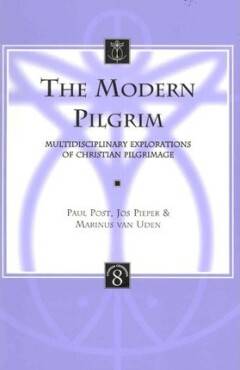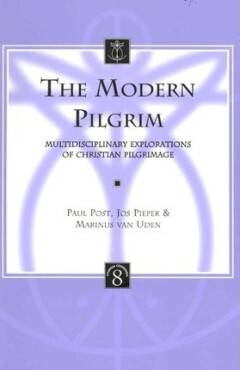
Je cadeautjes zeker op tijd in huis hebben voor de feestdagen? Kom langs in onze winkels en vind het perfecte geschenk!
- Afhalen na 1 uur in een winkel met voorraad
- Gratis thuislevering in België vanaf € 30
- Ruim aanbod met 7 miljoen producten
Je cadeautjes zeker op tijd in huis hebben voor de feestdagen? Kom langs in onze winkels en vind het perfecte geschenk!
- Afhalen na 1 uur in een winkel met voorraad
- Gratis thuislevering in België vanaf € 30
- Ruim aanbod met 7 miljoen producten
Zoeken
The Modern Pilgrim
Multidisciplinary Explorations of Christian Pilgrimage
Pieper J. Post P., Van Uden M.
€ 76,45
+ 152 punten
Omschrijving
This book is the product of a relatively long history of pilgrimage research in a Dutch theological setting. It is intended as a report for an international audience on this long-running programme. Two lines are followed in the book. The first is the track of liturgical studies, in which an historical, European ethnological and anthropological approach has predominated. The second is a social science track, with specific content coming from psychology of religion. The combination of these two lines has been extremely fruitful. In addition to results of various surveys of contemporary pilgrimage practice and the expansion of research into ritual and cultural context in which modern pilgrims find themselves, special attention is also bestowed on historiographic issues involved in orienting pilgrimage research, and its theoretical and methodological aspects. The places of pilgrimage examined here are Wittem, Dokkum and Amsterdam in The Netherlands, Banneux in Belgium, Lourdes and La Salette in France, and Santiago de Compostela in Spain. The central question which informs the whole study is to what extent one can perhaps speak of a new type of pilgrim today, the "modern pilgrim".
Specificaties
Betrokkenen
- Auteur(s):
- Uitgeverij:
Inhoud
- Aantal bladzijden:
- 368
- Taal:
- Engels
- Reeks:
Eigenschappen
- Productcode (EAN):
- 9789042906983
- Verschijningsdatum:
- 1/01/1998
- Uitvoering:
- Paperback
- Formaat:
- Trade paperback (VS)
- Afmetingen:
- 152 mm x 229 mm
- Gewicht:
- 635 g

Alleen bij Standaard Boekhandel
+ 152 punten op je klantenkaart van Standaard Boekhandel
Beoordelingen
We publiceren alleen reviews die voldoen aan de voorwaarden voor reviews. Bekijk onze voorwaarden voor reviews.









